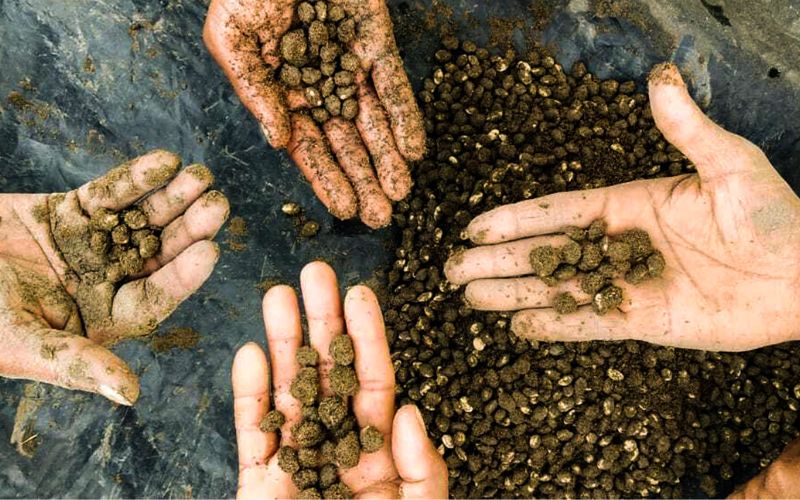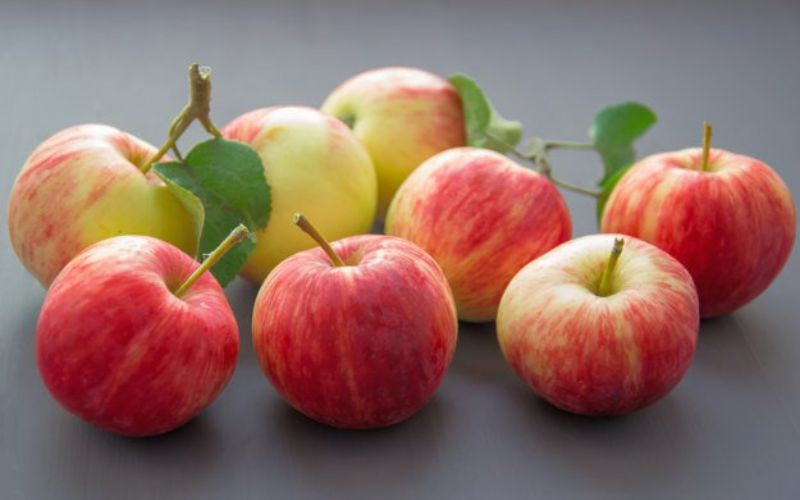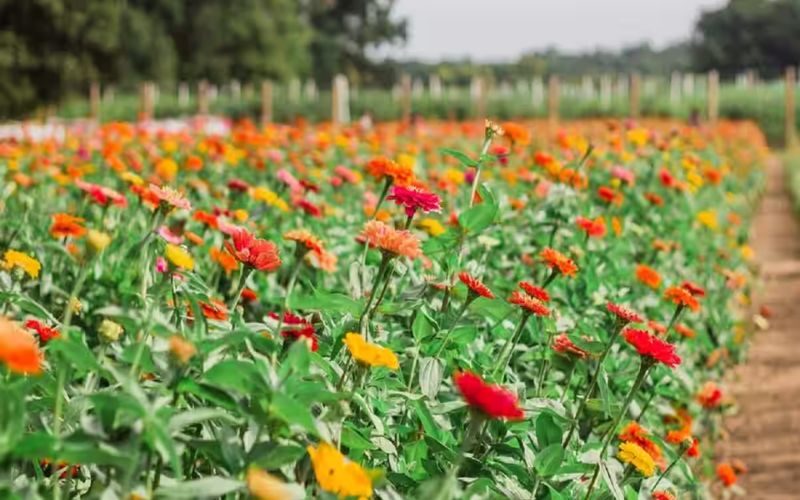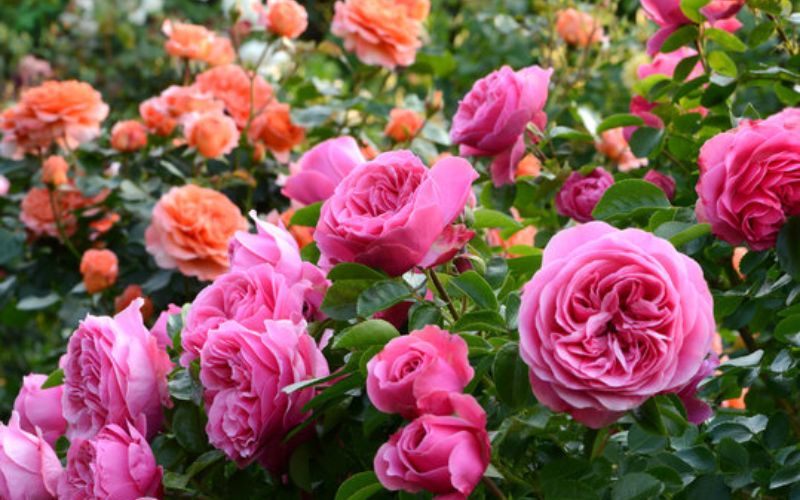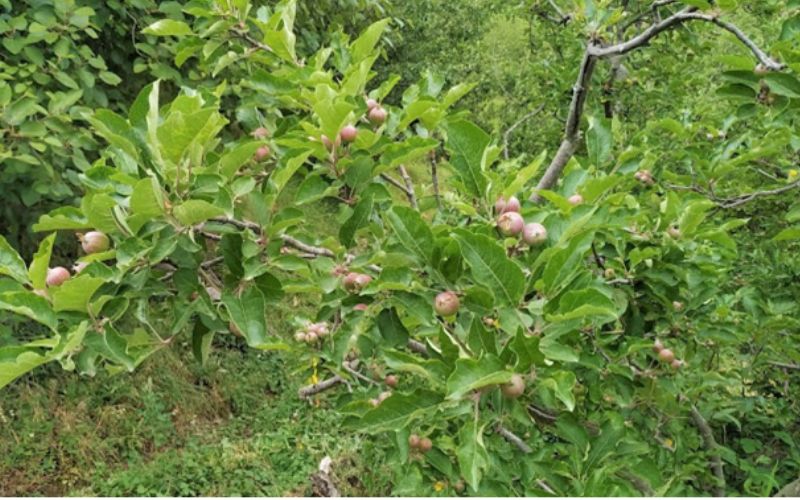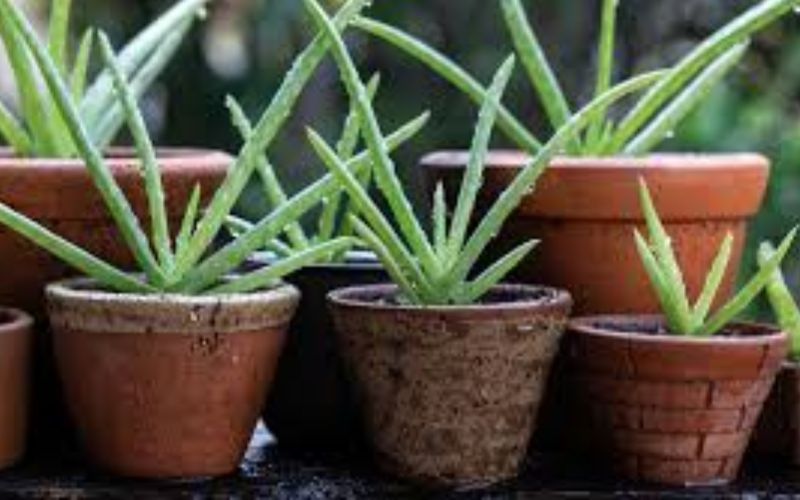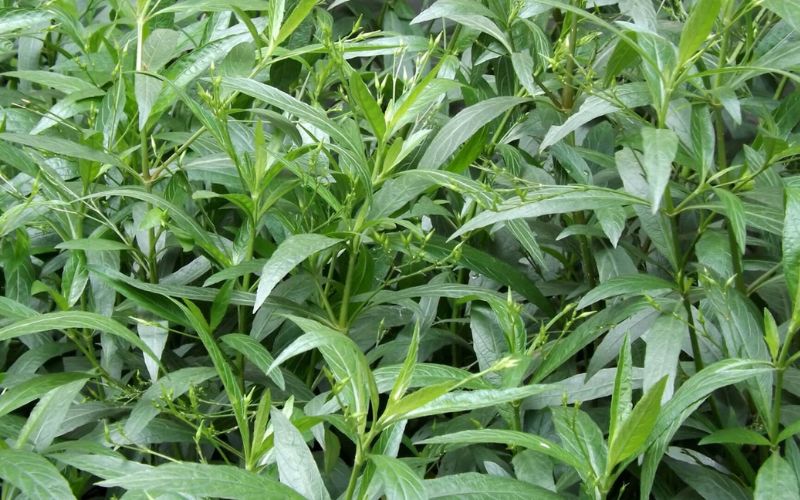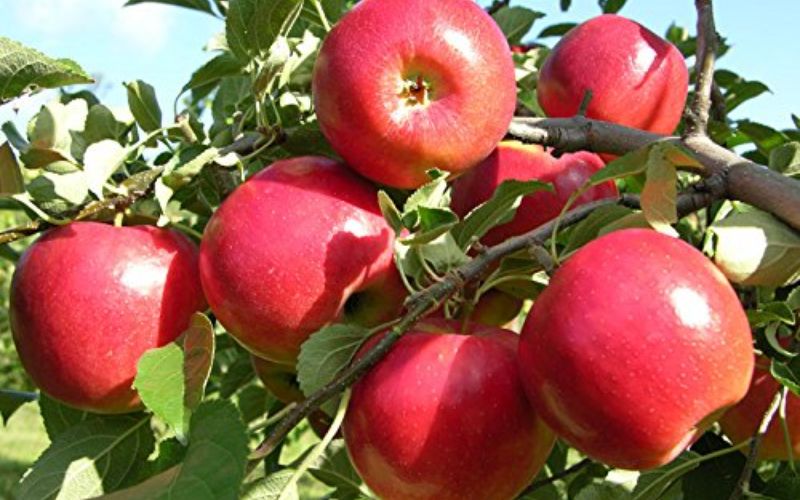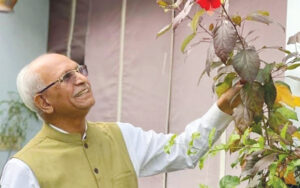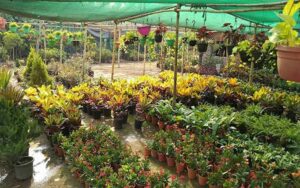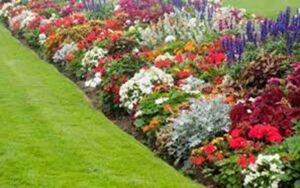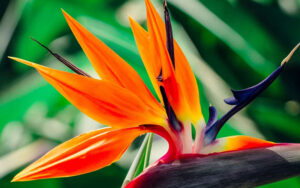ZZ: AN UNIQUE INTERIOR ORNAMENTAL PLANT
Devarai Lava Kumar
M. K. Singh, Babita Singh, Ritu Jain, Vanlalruati, Prativa Anand & A. K. Tiwari
Division of Floriculture and Landscaping, ICAR-Indian Agricultural Research Institute, New Delhi
ZZ (Zamioculcas zamiifolia), a tropical herbaceous monocotyledonous plant, native to Eastern Africa and belongs to the family Araceae. It is popularized by several other names such as Zanzibar Gem, ZZ plant, aroid palm, eternity plant, emerald palm, African coontie, arum fern and cardboard palm. In the foliage industry, the name ZZ plant or simply ZZ is currently used. Since its introduction in the Dutch nurseries during the year 1996, it has emerged as an important ornamental plant for interiors aping. The ornamental value of ZZ lies in its unique appearance, ability to tolerate low light, drought stress and resistance to pest and diseases. This plant symbolizes “steady” and “growing”. People normally like to place one or two kinds of plants in the office or home and wish for good fortune. The ZZ plant (Fortune Tree) is thought to bring good fortune and luck with its significant thick, textured leaves.
Botany: Zamioculcas is an herbaceous perennial growing to a height of 45–60 centimeters (17.7–23.6 in), from a stout underground, succulent rhizome. It is normally evergreen, but becomes deciduous during drought, surviving drought due to the large potato-like rhizome that stores water until rainfall resumes. The leaves are pinnate, 40–60 centimeters long, with 6–8 pairs of leaflets 7–15 centimeters (2.8–5.9 in) long; they are smooth, shiny, and dark green. The stems of these pinnate leaves are thickened at the bottom. Zamioculcas zamiifolia contains an unusually high-water contents in leaves (91%) and petioles (95%) and has an individual leaf longevity of at least six months, which may be the reason it can survive extremely well under interior low light levels for four months without water. The flowers are produced in a small bright yellow to brown or bronze spadix 5–7 centimeters (2.0–2.8 in) long, partly hidden among the leaf bases; flowering is from mid-summer to early autumn. The blooms are tiny and not incredibly attractive, it is grown more for its beautiful foliage. The ZZ has a reproductive strategy that’s unique among arums: Its fallen leaflets can take root. Fruit is white coloured berries, surrounded by persistent tepals and 1-2-seeded. Seeds brown, ellipsoid; embryo large, rich in starch, endosperm nearly absent, present only as a few cell layers at chalazal end.
Ornamental uses: ZZ plant is a popular houseplant with glossy and attractive leaves. These are very easy to grow indoor plants with little care. Dwarf plants with short stature can be placed on office desks or table tops. While plants with larger spread are ideally placed on the floor, even in corners where light levels are low. ZZ works well as an accent plant in areas where it can spread its wings. It can fit well in the waranda and corridors. It became a common plant in indoor scaping or Interioscaping where ZZ acts as a good naturalizer. Apart from beautification, it has the potential to reduce the concentration of benzene, toluene, ethylbenzene, and xylene (BTEX) from contaminated indoor air.
- Various uses of ZZ plant in Interioscaping
Specimen plant
Table top
Hanging Plants
Multi-coloured foliage plant
Pot group plant
In pebble tray
Display window
Indoor Garden
Cultivation aspects:
Climate: Unlike most aroids, ZZ plants are inhabitants of humid to seasonally dry grasslands and shady areas of lowland forests in eastern Africa and are well-known for their drought tolerance. This may be due to waxy and shiny leaves along with fleshy stems, that promotes an extremely low transpiration rate. During drought period, the above ground parts usually fall off leaving only the swollen petiole bases and plant survives solely on water reserved by the rhizome.
Temperature and Humidity: In general, it can grow at a temperature range of 15 to 38ºC but optimum growth takes place with air temperatures between 18 and 32ºC. However, high temperature is known to favour increased leaf production. During winter, temperature below 10ºC may give in chilling injury to the plants. Therefore, in temperate regions, this is more common as a house plant. Average house humidity is advised but humidity should be increased if artificial heating within the home or workplace is quite dry. Relative humidity in shaded production greenhouses should range from 50 to 95%.
Light requirements: ZZ is one among the low light tolerant foliage plants such as snake plant (Sansevieria trifasciata) and cast-iron plant (Aspidistra elatior). It is easily maintained and adds stalks and new leaves under interior low light environments. Plants like indirect light but can tolerate low levels of natural light. However, plant growth is much slower in lower light conditions as compared to indirect bright light conditions. ZZ plants will not tolerate direct sunlight and too much direct light will cause scalding (a whitening) of leaves. The preferred light level for commercial production ranges from 1,500 to 2,500-foot candles.

Planting: Within one month after sticking, a small rhizome forms at the base of cuttings, followed by emergence of adventitious roots and after another one month or more, the first shoot emerges from a newly formed rhizome. When rooting is completed, the cuttings can be transferred to bigger pots. The pot size may vary from 10 to 25 cm (4-10 inches) diameter according to the number of cuttings planted. For smaller pots, only one cutting is recommended, while for larger ones, 3-4 cuttings can be accommodated.
As ZZ grows slowly even under most ideal conditions, it takes about 8 to 12 months from rhizome planting to reach marketable size. The production time is dependent on quantity and size of rhizomes. More number or larger rhizomes in an appropriately sized pot led to more shoots and reduce production time. After transplanting, as shoots develop and new leaves unfold, the existing rhizomes enlarge and additional smaller rhizomes are formed.
Propagation: ZZ plant is propagated vegetatively through division of rhizomes or leaf and petiole cuttings. Among all methods the commercially followed is division. Propagation through division is achieved by separating individual rhizomes, sorting them based on size and planting the similar-sized rhizomes into containers filled with a growing media. Rhizomes vary in size depending on the age of the plant, with a diameter ranging from 0.4 cm for those newly formed from leaf cuttings to10 cm or larger after 2 years of growth. Depending upon the rhizome and container size, one to five rhizomes are planted in one container. The larger the rhizome, the more shoots will be produced.
Growing media/Substrate: It is not necessary to use a specific potting mix for the ZZ plant, any well-drained potting soil will be enough. Commercial potting mixes, such as 60% sphagnum peat, 20% perlite, and 20% vermiculite or 55% sphagnum peat, 25% pine bark, and 20% perlite, can be used for ZZ plant. Mixes should have good physical properties and a pH of 6.0 to 7.0 with an electrical conductivity (EC) of 1.0 to 2.0 dS/m.
Manures and fertilizers: Potting soil usually comes with nutrients, but they gradually get depleted after a couple of months, as plants consume them. Therefore, fertilizing the plants for further growth and development is necessary. For this, controlled released fertilizers can be either incorporated into or top-dressed on the growing medium. It can also be fertilized with a balanced 10-10-10 or 20-20-20 liquid fertilizer. During the growing season plants can be fertilized once or twice. Fertilization is generally discouraged during winter periods. As ZZ is a slow growing plant, in order to get early and faster growth it shouldn’t be over-fertilized.

Irrigation: ZZ can survive without being watered for 3 to 4 months because of having unusually high-water content in leaves, petioles, and rhizomes. The plant grows best when the growing medium remains moist, but not completely saturated. Watering should be done sparingly and it is better to dry the media slightly between waterings. Overwatering is dangerous as it may kill the plants. Early signs of overwatering include yellowing of leaves and rotting of rhizomes. For commercial production in shaded greenhouses, drip or sub irrigation is preferable because overhead irrigation leaves water residue on the glossy leaf surfaces and reduces overall plant appearance and marketability. On the other hand, it also provides scope for fertigation.
Interculture/Aftercare: To keep the foliage nice and shiny, leaves can be cleaned with a damp cloth to remove dust. Pruning is rather not followed, but it is necessary to maintain the uniform plant size and form. If the plants become overgrown, then few branches can be pruned back to normal shape. Likewise damaged or yellow leaves should be removed as and when required. ZZ plant doesn’t need frequent repotting because of its slow growing nature. Repotting can be done once in every two years to refresh the soil and improve drainage, putting it back in the same container after trimming away overgrown roots and stems. If plants are intended to grow larger, then they should be transferred into a larger pot. Like other aroids, ZZ plants also contain calcium oxalate crystals and should be handled with gloves to avoid skin irritation.
Insect, Pest and Diseases: ZZ plant is seldom infested by pest and diseases. The most common pest is brown scale on their foliage. These pests can be removed with rubbing alcohol or treated with insecticidal soap. The plants may be affected by root rot, if plants grow in poorly aerated media with excessive water for an extended period of time. In recent years, several other diseases such as Basal petiole rot, soft rot, Konjac Mosaic virus have been reported in ZZ plant. Well aerated media, usually with total porosity of 50% to 75% and air space 10% to 20% will ensure healthy growing of plants.


